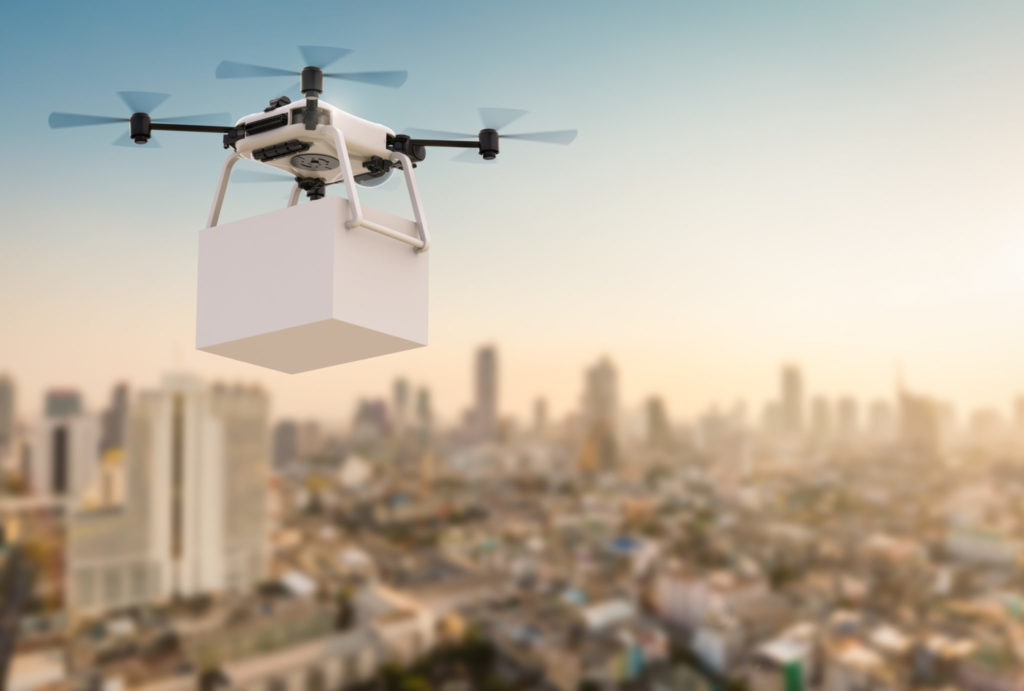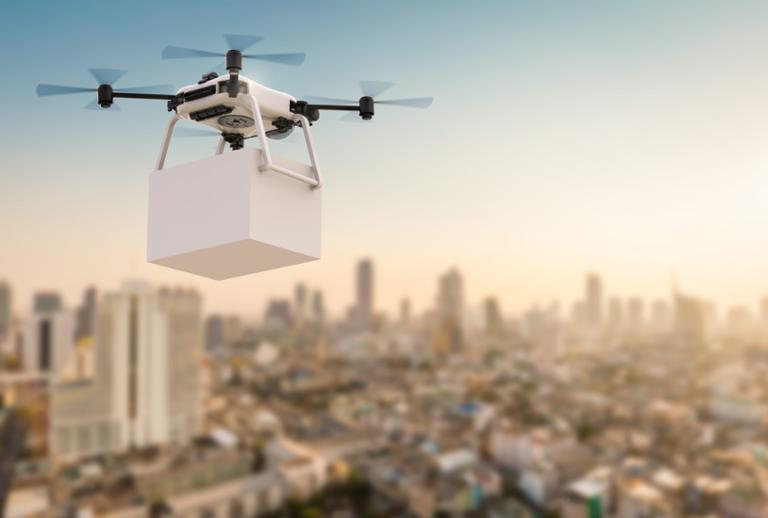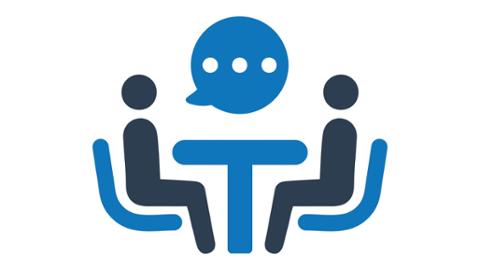
There are drones that fly over Afghanistan, hunting for terrorists. There are drones that fly over your backyard, hunting for great aerial footage. And those are just two uses for these buzzing devices: there are drones that map, inspect crops, provide security, search-and-rescue, and deliver packages. Commercial drones are platforms. Their manufacturers need programmers who can build the software that not only controls everything from the cameras to the onboard engines, but also analyzes any data that the drones record. Some of these firms take an integrated approach, tightly binding proprietary software to specific drone hardware; others are building software that can work across many different models of drone. Today, the drone sector is worth roughly $755 million, but will probably expand to $2 billion by 2022. That’s a growth rate of more than 21 percent, according to
Knowledge Sourcing Intelligence. Much of that rise will hinge on the successful resolution of regulatory and insurance issues; as the market matures, there may also come an inevitable wave of company shutdowns and consolidation.
The Wright Stuff Meets the Write Stuff
Many drone companies are small outfits with big dreams. Whatever their size, these firms all share a need for programmers who can work on multiple projects (and multiple languages) as opposed to specializing in one particular discipline or language. “We look for execution. We’re not looking at résumés and pedigree,” said Joshua Ziering, co-founder (and chief pilot) for Kittyhawk, an integrated drone-operations company. Kittyhawk’s solution relies on a smartphone app to control and pilot the drone, requiring little expertise to operate. The drone will run data straight to the web, so that layer of integration is needed, as well. In light of that, Kittyhawk needs people who can do full-stack development, from Swift and Android to the Web and backend. “We make sure everyone can do one or two of them,” Ziering said. DroneLogbook is a flight management data platform that’s casting a wide net for programming talent, explained CEO Yves Jusot. The team can include an
edge- computing developer, a programmer to implement code at the drone- and ground-station level (i.e., C++ or Java skills), mobile developer (
iOS, Android or hybrid iOnic), back-end developer (Java, PHP, NodeJS), cloud engineer (SaaS, PaaS, database administrator) and front-end web developer (dashboards, data analysis, fleet and equipment management). “Developers are coming from engineering schools/computer science programs. No people from other drone-industry companies so far,” Jusot said. “So yes, we are hiring people with [a] computer science background and good ability to learn technologies. Full stack (front-end and back-end) development skills is also a must, to be able to cover a complete module development.” SenseFly turns out configurable drones for mapping and inspection, so their design challenges go beyond merely getting things airborne. “Depending on the team, we look for specialists who are experts in only a few disciplines, or generalists who have diverse skillsets,” said Arnaud Gelas, software team leader. “In our R&D department, we usually look for developers with C/C++ skills and a knowledge of scripting language such as Python. Moving towards web and mobile applications, we now also look for DevOps expertise or Objective-C expertise.”
Straighten Up and Fly Right
Today’s drone is a fortuitous combination of several technologies. Sensors,
brushless motors, and high-discharge lithium batteries now make it possible to craft smaller drones with greater capabilities, Ziering noted. In the case of Kittyhawk, the key enabler is the smartphone that allows the user to pilot the aircraft. “This is about having a super computer in your pocket,” Ziering said. “A production drone has more computing [power] than an old smartphone.” A drone must be light enough to fly despite add-ons like cameras. SenseFly’s eBee, just a mere 1.5 pounds, makes do with EPP foam for its airframe, explained co-founder and CEO Jean-Christophe Zufferey. Should the eBee come crashing down, it would have “roughly the same impact energy as a kicked football, “ he said. The onboard sensor package allows the drone to land within five meters of its designated landing zone. “A system using [a] drone to generate valuable data is a full stack system,” Jusot said. “[It] is an IoT (Internet of Things) connected-device system, and so part of a full IoT solution.” “Specialties must well understand the UAV environment. Radio and GPS connection, Robotics parts control, etc. have to be well integrated by all specialties,” he continued. “But generally, it’s important that all implicated developers should know and enjoy flying a drone.” The rise of other technologies ultimately made drones possible. “The drone industry growth was largely enabled thanks to the rise of the smartphone market,” observed Amit Regev, VP for product at Flytrex. “Sensors like accelerometers, gyros and GPS chips that previously cost thousands of dollars apiece suddenly began to be mass-produced and became widely available at a fraction of the cost.” There are no silos in small drone companies; people in different departments must work together to develop the solution. “Many of our software engineers studied electronic engineering and have vast experience in the field, so it makes getting the job done a lot easier,” Regev said. Flytrex’s software leveraged a common web stack—Python, Django, Angular, Ionic, ElasticSearch, Redis, and other platforms. That necessitated hiring employees not only with diverse skillsets, but who gravitated toward innovation in general. “We found that curious, enthusiastic employees have a more efficient learning curve, and they acquire more skills, which benefits us in the long run,” Regev continued.
Find out how much are your skills worth. Try our tech salary calculator now.
 There are drones that fly over Afghanistan, hunting for terrorists. There are drones that fly over your backyard, hunting for great aerial footage. And those are just two uses for these buzzing devices: there are drones that map, inspect crops, provide security, search-and-rescue, and deliver packages. Commercial drones are platforms. Their manufacturers need programmers who can build the software that not only controls everything from the cameras to the onboard engines, but also analyzes any data that the drones record. Some of these firms take an integrated approach, tightly binding proprietary software to specific drone hardware; others are building software that can work across many different models of drone. Today, the drone sector is worth roughly $755 million, but will probably expand to $2 billion by 2022. That’s a growth rate of more than 21 percent, according to Knowledge Sourcing Intelligence. Much of that rise will hinge on the successful resolution of regulatory and insurance issues; as the market matures, there may also come an inevitable wave of company shutdowns and consolidation.
There are drones that fly over Afghanistan, hunting for terrorists. There are drones that fly over your backyard, hunting for great aerial footage. And those are just two uses for these buzzing devices: there are drones that map, inspect crops, provide security, search-and-rescue, and deliver packages. Commercial drones are platforms. Their manufacturers need programmers who can build the software that not only controls everything from the cameras to the onboard engines, but also analyzes any data that the drones record. Some of these firms take an integrated approach, tightly binding proprietary software to specific drone hardware; others are building software that can work across many different models of drone. Today, the drone sector is worth roughly $755 million, but will probably expand to $2 billion by 2022. That’s a growth rate of more than 21 percent, according to Knowledge Sourcing Intelligence. Much of that rise will hinge on the successful resolution of regulatory and insurance issues; as the market matures, there may also come an inevitable wave of company shutdowns and consolidation.
 There are drones that fly over Afghanistan, hunting for terrorists. There are drones that fly over your backyard, hunting for great aerial footage. And those are just two uses for these buzzing devices: there are drones that map, inspect crops, provide security, search-and-rescue, and deliver packages. Commercial drones are platforms. Their manufacturers need programmers who can build the software that not only controls everything from the cameras to the onboard engines, but also analyzes any data that the drones record. Some of these firms take an integrated approach, tightly binding proprietary software to specific drone hardware; others are building software that can work across many different models of drone. Today, the drone sector is worth roughly $755 million, but will probably expand to $2 billion by 2022. That’s a growth rate of more than 21 percent, according to Knowledge Sourcing Intelligence. Much of that rise will hinge on the successful resolution of regulatory and insurance issues; as the market matures, there may also come an inevitable wave of company shutdowns and consolidation.
There are drones that fly over Afghanistan, hunting for terrorists. There are drones that fly over your backyard, hunting for great aerial footage. And those are just two uses for these buzzing devices: there are drones that map, inspect crops, provide security, search-and-rescue, and deliver packages. Commercial drones are platforms. Their manufacturers need programmers who can build the software that not only controls everything from the cameras to the onboard engines, but also analyzes any data that the drones record. Some of these firms take an integrated approach, tightly binding proprietary software to specific drone hardware; others are building software that can work across many different models of drone. Today, the drone sector is worth roughly $755 million, but will probably expand to $2 billion by 2022. That’s a growth rate of more than 21 percent, according to Knowledge Sourcing Intelligence. Much of that rise will hinge on the successful resolution of regulatory and insurance issues; as the market matures, there may also come an inevitable wave of company shutdowns and consolidation.



